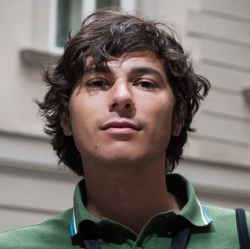


The InterAcademy Partnership (IAP) and the US National Academies of Sciences, Engineering, and Medicine collaborated on a pilot excercise during the Meeting of Experts in August to examine how two qualitative frameworks developed to address biosecurity concerns could support transparent discussions of advances in S&T. In a workshop on 1 August, a diverse international group of participants had the opportunity to apply these framweworks using BWC-relevant case examples. They discussed ways in which the frameworks could be adapted to help meet BWC goals, and began a discussion of how to develop a framework to address potential benefits of advances in S&T.
IAP and US NASEM organised a side event on 04 December 2018 at the BWC Meeting of States Parties (Geneve, Switzerland) to shine some light on the role of qualitative frameworks. They also released the summary report of the exercise and discuss the ways in which they could support the BWC (the summary report is also available at /node/51554). The speakers were Jo Husbands, from U.S. National Academies, and Nancy Connell, from the Johns Hopkins Center for Health Security.
Nancy Connell began the session by introducing the summary of the August 1st event titled. The summary reviews the two hypothetical scenarios assessed (Change in transmissibility of an emerging viral pathogen and Engineering the Microbiome) and how the team of 30 scientists and policy-makers applied two proposed frameworks (the US NASEM Synbio framework and the Tucker Framework). Questions posed to the panelists by Nancy Connell at the event focused on the panelists perspective of the strengths and weaknesses of the two frameworks and any insight they gained as participants in this process. Overall, remarks from the panelists emphasized the benefit of using multiple frameworks to assess risks of emerging biotechnologies. In particular, the use of frameworks allowed the various participants to identify commonalities in their perspectives while also fleshing out differences of semantics/philosophies in a structured manner. As a conclusion to the event, Nancy Connell shared the intention of the InterAcademy Partnership to continue facilitating similar exercises with wider participation from other sectors (military, commercial, academic, etc.).
